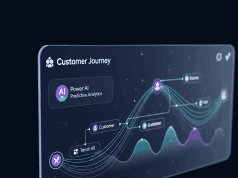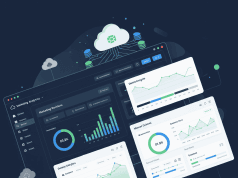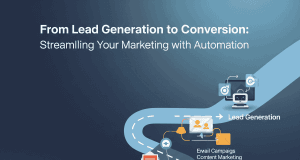In the dynamic world of marketing, staying ahead of trends and consumer preferences is crucial for success. As businesses strive to connect with their audiences more effectively, the power of prediction emerges as a transformative tool. Leveraging data-driven insights, marketers can enhance their campaigns, make informed decisions, and ultimately drive greater engagement and conversions.
Understanding Data-Driven Marketing
Data-driven marketing refers to the practice of using data, analytics, and metrics to guide marketing strategies and decisions. By collecting and analyzing data from various sources—such as customer interactions, online behaviors, and market trends—marketers can gain a comprehensive understanding of their target audience. This insight allows for the tailoring of marketing messages to specific segments, optimizing campaign performance, and improving return on investment (ROI).
The Role of Predictive Analytics
Predictive analytics is a cornerstone of data-driven marketing. It utilizes statistical algorithms and machine learning techniques to identify patterns in historical and real-time data, enabling marketers to anticipate future outcomes. For example, predictive analytics can reveal which customers are most likely to make a purchase, the timing of their purchases, and even the products they are likely to buy.
Key Benefits of Predictive Analytics in Marketing
- Enhanced Targeting: By analyzing customer data, marketers can segment their audience based on behavioral patterns, demographics, and preferences. This enables more personalized messaging and offers, which significantly improve engagement rates.
- Improved Campaign Performance: Predictive analytics helps in optimizing marketing campaigns by identifying the most effective channels and formats. Marketers can allocate resources to strategies that yield higher returns, thereby maximizing ROI.
- Customer Retention: Understanding which customers are at risk of churning allows businesses to implement retention strategies proactively. Personalized outreach and targeted offers can reinvigorate interest and loyalty among customers who might otherwise disengage.
- Forecasting Trends: By analyzing market trends and consumer behavior data, businesses can forecast upcoming trends, allowing them to stay ahead of the curve. This forward-looking approach can inform product development and inventory management, reducing waste and enhancing customer satisfaction.
Implementing Predictive Analytics in Marketing Campaigns
To effectively harness the power of prediction, marketers should consider the following steps:
1. Data Collection and Integration
Gathering data from various sources—such as CRM systems, social media platforms, and website analytics—is essential. Integrating these data points into a cohesive system allows for a comprehensive analysis of customer behavior.
2. Choose the Right Tools
Utilizing advanced analytics tools and platforms that support predictive modeling is crucial. These tools can automate data analysis processes and provide actionable insights more efficiently.
3. Develop Predictive Models
Creating predictive models involves identifying key variables that influence customer behavior, such as purchase history, browsing patterns, and demographic information. Machine learning algorithms can be employed to refine these models over time.
4. Test and Iterate
Once predictive models are in place, it’s important to monitor campaign performance continuously. A/B testing different approaches based on predictive insights can reveal the most effective strategies. Iteration and optimization are key to ongoing success.
5. Foster a Data-Driven Culture
Building a data-driven culture within an organization ensures that all team members understand the importance of data and analytics. Training and ongoing education can help teams effectively utilize predictive insights in their marketing efforts.
Challenges and Considerations
While predictive analytics offers significant advantages, there are challenges to consider. Issues such as data privacy concerns, bias in algorithms, and the need for skilled analysts can hinder implementation. Marketers must be diligent in ethically sourcing data and ensuring the accuracy of predictive models to avoid misrepresentations.
Conclusion
In a landscape marked by rapid change and evolving consumer expectations, the power of prediction is a game-changer for marketing campaigns. By embracing data-driven insights, businesses can craft more targeted, effective, and engaging marketing strategies. As technology continues to evolve, the potential for predictive analytics will only grow, further elevating the role of data in shaping marketing success. Embracing this shift today will prepare marketers for the challenges and opportunities of tomorrow, ensuring they remain competitive in an ever-changing marketplace.









